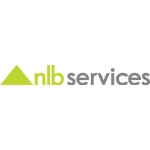© 2025 Next Level Business Services Inc. All Rights Reserved.
Employer Branding KPIs Every HR Leader Should Track
By NLB Services
Employer branding, once a concern for big corporations, has come a long way. From a nice-to-have in the arsenal, it has now become a strategic necessity. As organizations continue their hunt for top-tier talent, your company’s reputation as an employer can be the deciding factor that tips the scales in your favor.
Employer branding is like a secret weapon in not just enticing new talent but also retaining the best performers in the workforce. Organizations are realizing that it’s no longer just about the paycheck. Candidates are looking for workplaces that align with their values, offer growth opportunities, and provide a positive culture.
However, employer branding stays on paper in most organizations. As a practice, it requires precise tracking and analysis. The quantification of employer branding is done through measuring KPIs that offer invaluable insights into the efficacy of your recruitment strategies. By tracking these indicators, HR leaders can make data-driven decisions, modify their approaches, and ultimately, elevate their employer brand. Let’s dive into the essential employer KPIs that will help you elevate your employer branding and recruitment game in 2026.
Why Measuring Employer Branding KPIs Matters
Tracking employer branding KPIs is more than just statistics or numbers.
They act as an introspective mirror, stating how effectively both potential recruits and those already on board reflect and resonate with your brand. It acts as a bridge between the brand’s narrative and the real-life experiences of your employees and potential candidates, ensuring alignment and authenticity.
Focusing on KPIs that align with your employer branding efforts ensures that your brand is on the right track and agile enough, at the same time, allowing you to make necessary adjustments. This approach not only enhances your brand’s image but also contributes to tangible business outcomes.
Top Employer Branding KPIs to Track
There are multiple KPIs, big or small, that organizations can track in order to assess their employer branding. Here we will be sharing the critical ones that you must track in order to get a fair idea of your employer branding.
Employee referral rate
Did you know that your current employees can be your employer brand ambassadors?
Because they are the ones who know what it’s like to work for your company and are satisfied with their experience.
The more employees talk about your company, the more likely it is for them to refer qualified people to join your organization. Many studies also indicate that referrals are less expensive than traditional recruitment. Assessing your employee referral program can help you understand if your employees are happy with your organization and willing to advocate for you.
Needless to say, a high referral of apt candidates and accepted job offers from referred employees shows you’ve got a thriving employer brand from the employees’ perspective.
On the flip side, a reduced number of referrals could indicate a negative employer reputation, translating to a smaller number of job seekers applying to the company.
Candidate Engagement Rate
Candidate Engagement Rate is a vital KPI that evaluates the effectiveness of your recruitment marketing efforts and the appeal of your employer brand. You can calculate this metric by tracking the number of interactions candidates have with your job postings, social media content, or even email campaigns.
Think of it as a real-time indicator for how compelling and attractive your employer brand is to potential hires. A high Candidate Engagement Rate indicates that your external branding is strong and your current employees are also playing a part in it.
Employee engagement rate/ Employee Net Promoter Score
Assessing employee engagement rates is another good employer branding KPI. Happy and satisfied employees are willing to promote their organization as a great place to work.
Employee experience reflects how people feel about working at your company, how much they are engaged, from onboarding to career development to daily culture. It’s a reality check behind your employer brand promise. Your employer brand is more or less your employee engagement experience, but viewed from a bird’s-eye view.
If there’s a discrepancy between what your organization claims and what employees actually experience, it breaks trust, both internally and externally. An obvious way to measure employee experience is through data gathered via employee engagement surveys and interviews. If a growing number of employees feel their employee experience is different from what you say in your employer branding, you may want to make some changes.
Offer Acceptance Rate
Apart from existing employees, organizations keep on hiring new talent as well. The offer acceptance rate is a pivotal KPI that checks the attractiveness of your job offers to prospective employees.
This metric is measured by taking the number of job offers that have been accepted and dividing it by the total number of offers extended, usually expressed as a percentage.
When the Offer Acceptance Rate is low, it indicates a vacuum between what candidates are looking for and your organization’s offering, signifying that your employment value proposition may need a revisit or better messaging to candidates. On the other hand, a high rate often signifies that your offers are competitive and well-aligned with candidate expectations, making you an employer of choice.
Time to Hire
A critical KPI that directly impacts your capability to secure top talent before your competitors do. This refers to the period between when a job vacancy is advertised and a candidate accepting the job offer. The quantification of this metric is crucial in industries where skill sets are in high demand and the talent pool is limited.
Organizations can significantly reduce their Time to Hire by streamlining the early stages of the hiring process. In addition to enhancing the candidate experience, a shortened Time to Hire enables your company to respond to staffing needs faster.
Quality of Hire
This critical KPI aims to measure the value a new hire brings to the organization in the long run. It consists of a range of indicators such as performance reviews, turnover rates, and employee career progression within the company.
Often considered the ultimate measure of recruiting effectiveness, Quality of Hire directly correlates with the overall success and growth of the organization.
By closely analyzing the Quality of Hire, organizations can enhance their recruitment techniques to ensure they are attracting and retaining the right talent.
Number of open applications
A robust employer brand is key to attracting future employees.
The likelihood of job seekers knowing you as an employer of choice increases with enhanced employer branding.
A good impression of an organization, or what it stands for, goes a long way in candidate offering and offer acceptance. Examining the number of applications received will help you understand the visibility of your employer brand. You’re on the right track if there’s a surge of resume submissions after implementing several employer branding strategies.
Data Driven Branding to Win Talent
Building a strong employer branding is not limited to strong storytelling; the story needs to be backed by data. HR can gather insights from recruitment metrics, engagement surveys, social listening, and candidate feedback that can help organizations get a clearer understanding of what attracts and retains talent and how employer branding can be taken to the next level.
By identifying patterns and preferences, businesses can craft more authentic messaging, improve hiring tactics, and make every interaction with potential employees meaningful. In a nutshell, data enhances creativity by helping brands connect with the right talent and get the most out of their employer branding.
Conclusion
Building a strong employer brand isn’t a one-time project; it’s an ongoing commitment that evolves with your organization and the market. The employer branding KPIs we’ve discussed aren’t just numbers on a dashboard; they’re real indicators of how your brand resonates with both current employees and potential candidates.
You can start by selecting the right employer branding metrics that align most closely with your organization’s goals and current challenges. You don’t need to track everything at once. Focus on two or three key indicators, gather baseline data, and build from there. Remember, the goal isn’t perfection from day one but more about achieving progress over time.
What makes employer branding particularly powerful is its ripple effect. When you get it right, you’re not just filling positions faster or reducing recruitment costs. You’re creating a workplace that people genuinely want to be part of, talk about, and recommend to others. That kind of authentic advocacy money simply can’t buy.
As we move further into 2026, the organizations that will win the talent war are those that treat employer branding KPIs as a strategic priority, backed by solid data and a genuine commitment to employee experience. The question isn’t whether you can afford to invest in employer branding, it’s whether you can afford not to. Read more blogs on recruitment here.
Frequently asked questions
- What is the most important metric for employer branding?
Employer branding cannot go with a one-size-fits-all approach; it is always a mix of different focus points and fixing two or three things at once. The most important metric depends entirely on where your organization is in its employer branding journey and what challenges you’re facing.
That said, if you had to pick one metric that matters across the board, it would be Employee Net Promoter Score. Your employees are your most credible brand ambassadors, and if they’re not willing to recommend your organization, no amount of external marketing will compensate for that gap.
- Can small companies track employer branding effectively?
Absolutely, and in some ways, small companies have an advantage here. They don’t need expensive tools or a dedicated team to start measuring what matters.
Begin with the basics: track your application numbers, ask departing employees why they’re leaving, survey your current team about their experience, and monitor your offer acceptance rate. Most of these require nothing more than a spreadsheet and a commitment to asking questions.
- Can employer branding be outsourced?
Yes, but there is an important caveat. You can outsource the execution, but the strategy or authenticity needs to come from you.
External agencies can help with content creation, social media management, career site design, and even employer branding campaigns. They bring expertise, fresh perspectives, and resources that many internal teams lack. However, the foundation of your employer brand- your values, culture, and employee experience- has to come from within.
- How can we compare our employer brand against competitors?
Competitive benchmarking is valuable, but it requires looking in the right places. Start with platforms where employer brands are publicly visible: Glassdoor, Indeed, LinkedIn, and industry-specific review sites.
Look at competitors’ ratings, review volume, and the themes in employee comments. Check their social media engagement; how many people interact with their posts? Monitor their job postings: how long do positions stay open? Tools like LinkedIn Talent Insights can show you how quickly they’re hiring and where they’re finding talent.
You can also gather intelligence through candidate feedback. Ask interviewees what other companies they’re considering and why. When candidates decline offers, ask where they’re going instead and what tipped the balance.
- What is the role of leadership in employer branding?
Leadership isn’t just important to employer branding; it’s absolutely critical. Your employer brand can’t exist separately from your leadership team; they either reinforce it or undermine it with every decision they make.
Leaders set the tone for organizational culture, make the investments needed for employee experience, and serve as the most visible representatives of your brand. When leadership actively champions employer branding, it signals to everyone that these matters. When they don’t, no amount of marketing can compensate.
Talent Solutions








